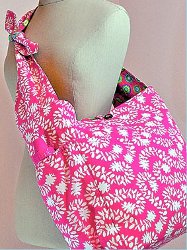
Reinventing
the
High Street
The high street is under attack as never before, with hundreds of retailers closing their doors every month. Now it is time to fight back. In the Saturday Telegraph today, Sir Terry Leahy* launches a new Telegraph campaign that aims to put the heart back into our towns.
The high street has a hallowed place in the British psyche. The butcher, the baker and the candlestick maker are a fixture of our society, along with the whack of leather on willow, the Changing of the Guard at Buckingham Palace, the Last Night of the Proms. The high street is almost an institution, and many people believe it does not – and should not – change.
The reality, of course, is that no high street has ever fitted this Ealing Studios’ stereotype. They are always changing. Tesco was a product of that change. Now attacked for being “too big”, its critics ignore the fact that, like any other multinational retailer, it began life as a small business – a tiny market stall in the hurly-burly of the East End of London. Its rise to become one of the world’s largest retailers was not thanks to any law, edict or ministerial proclamation, but the consumer – you, and the millions of people like you.
And now you, and all your fellow consumers, are changing the high street again at a pace not seen for decades, if ever before. The banking crash and recession have squeezed budgets. People are having to work harder and longer to make ends meet.
 We’ve been through recessions before, of course, but whereas in previous downturns you might have gone to shop at a discounter, or walked down the high street comparing prices, the chances are that today you turn on your computer or pick up your iPhone and browse online.
We’ve been through recessions before, of course, but whereas in previous downturns you might have gone to shop at a discounter, or walked down the high street comparing prices, the chances are that today you turn on your computer or pick up your iPhone and browse online.
The digital revolution, turbocharged by austerity, has created a tornado that has uprooted even the most established brands such as Woolworths and Comet. According to one recent survey, the retail chains shut an average of 20 shops a day last year – and that’s not to mention those closed by small, independent shopkeepers.
 Online shopping has killed entire business models that were built on the premise that you needed a shop to sell your product. So far, so depressing, you may think. Well, I am not joining the chorus of gloom and doom about the fate of the high street for the simple reason that, as Napoleon said, we are a nation of shopkeepers. He meant it as an insult, but I take it as a compliment.
Online shopping has killed entire business models that were built on the premise that you needed a shop to sell your product. So far, so depressing, you may think. Well, I am not joining the chorus of gloom and doom about the fate of the high street for the simple reason that, as Napoleon said, we are a nation of shopkeepers. He meant it as an insult, but I take it as a compliment.
The fact that people have so much choice of where to shop, and what to buy, reflects a simple fact: British retail is world class because it delivers for the customer, not just meeting but anticipating consumers’ needs. We are good at selling things in clever, new ways. Successful retailers – large and small – have grasped that. We are world leaders at e-commerce. You no longer need to have lots of bricks and mortar: a website is a shopfront for customers the world over.
Those customers are now sending a clear signal to retailers on the high street: make shopping fun. Value, choice, convenience – yes, everyone wants that, and people take it as a given. But to entice a busy mother or harassed commuter away from simply clicking on a mouse, you have to make shopping a pleasurable, social experience.
Savvy retailers and landlords have woken up and smelt the coffee – quite literally, investing in coffee shops, cinemas, restaurants, gyms. They realise that vibrant high streets are more than just places you go to shop. Community centres, nurseries, doctors’ surgeries, art galleries: the successful high street is a social place, not just a market. It is an environment which doesn’t fall quiet when the shops close, but is alive at night as people live there. So a mix of housing in with the shops, community facilities and leisure venues is important, especially if it is affordable or sheltered.
I believe Britain’s high streets are well placed to exploit the opportunity that is out there for them right now. For a start they were built on a human scale, so their architecture is – usually – more pleasurable on the eye than modern shopping centres.
When I said recently on Desert Island Discs that many high streets were “medieval”, some people howled that I was attacking them. Not so. It is merely a statement of fact that many high streets date back hundreds of years, and are clearly not designed for the way we live now. Small frontages, cramped loading bays and often narrow streets mean that many are totally unsuitable to have large, one-stop shops foisted on them.
Instead, we should make the most of what these high streets are. Walk through Chester, Haddington, Amersham, Beccles, Lymington or Wells, and you can sense the warm atmosphere that seems to ooze from the walls. This is more than just cultural value. It could offer a competitive advantage.
How do we make that possibility a reality? As a result of changes brought in by the Coalition, residents can now play a role in deciding a neighbourhood plan, which sets out a community’s vision for its area and gives us both a say and a stake in planning decisions. In my opinion, this is a fantastic step forward.
But an obstacle course of policies still stands in the way of local residents being able to transform their high street. To start Reinventing the High Street, in the words of The Daily Telegraph’s new campaign, which aims to spark debate and which I am delighted to endorse, I’d like to highlight three changes in particular that need to happen.
(1) We need to stop the steady rise in car park charges, which deters shoppers from venturing out. Many people rely on the car to shop. Rather than hitting them with higher charges, supermarkets, local amenities (like leisure centres) and councils should come together to think how big, free car parks can draw people into town centres.
(2) A neighbourhood plan could be put together to revive a local high street, in which case there should be just one architect and just one team in charge, empowered by the local community to transform their neighbourhood. Look at my home town, Liverpool. Run down and still bearing the scars of wartime bombing, its city centre had been written-off. A grand, £1 billion investment plan, Liverpool One, backed by one of the country’s largest property companies, Grosvenor, was drawn up. Decried by some as “too ambitious”, a good team has now transformed the city.
(3) Business rates need radical reform. When recession hits, small shopkeepers can see their revenues collapse through no fault of their own, but the business rates they pay remain the same. The system must change so that rates reflect the economic activity of the store.
I know what you're thinking: “He may say all this, but in reality the supermarkets and chain stores will squeeze out small operators.” The truth is that money is needed to reinvent high streets, and the most likely source of that investment is going to be large retailers and property companies.
 Between them they have expertise, understanding of consumers, and the incentive to create sustainable, attractive places to shop. They know that consumers shy away from identikit high streets in which old buildings have been torn down in the name of functionality. A diverse range of outlets including chains, boutiques, places to eat and have fun – this is where the money now lies.
Between them they have expertise, understanding of consumers, and the incentive to create sustainable, attractive places to shop. They know that consumers shy away from identikit high streets in which old buildings have been torn down in the name of functionality. A diverse range of outlets including chains, boutiques, places to eat and have fun – this is where the money now lies.
Again, look at Liverpool One. There, 20 architects recreated old streets, lost since wartime, reconnected the city to the waterfront, and made many distinctive quarters which have attracted different types of retailers in interesting clusters, all of it completely unlike the depressing uniformity of a shopping centre dropped onto a town centre without regard to its historic form or scale.
So it is time to end the antipathy that exists towards big retailers. Supermarkets are not the enemy of the high street. They might even be its saviour – witness the “local” branches bringing people back onto high streets.
There is a partnership to be forged, one that can preserve this British institution by hauling it from the analogue into the digital age. The high street is dead! Long live the high street!
* Sir Terry Leahy is a former chief executive of Tesco. His book, Management in 10 Words (Random House Business) is available from Telegraph Books (0844 871 1514) at £8.99 + £1.10 p&p.
Is the problem of our local shops because of supermarkets, out of town shopping areas (no parking costs), the internet - or a combination of all three?
Another person who talks a great deal of sense although I don't agree with everything she says, is Mary Portas, self-styled Queen of Shops. Here's a relevant excerpt from her site:

Mary Portas says there’s only one way to save our high streets – get involved.
"Every day I am asked to predict the future of the British high street. I don’t have all the answers, but one thing I do know is that high streets won’t be only about shops. The way we shop changes fundamentally every half century or so. Market traders were replaced by shopkeepers who were usurped by department stores who were challenged by the supermarkets and retail parks. Today internet retail is seen as the great usurper. While the web still represents only 12% of total sales, that figure is expected to rise sharply over the coming decade.
However, I blame the high street’s problems not on the internet but on out-of-town supermarkets. Lose the purpose of the local high street, and a community loses its heartbeat. We have a social responsibility to find a way to reinvigorate our local hubs. In my travels around the country I’ve seen some inspiring examples of entrepreneurs creating new social, cultural and community stores in empty buildings. I loved Bubba Hub in Bedminster (a creche and young mothers’ social club right on the high street), a teenage market in Stockport, and the community store and street market in Market Rasen, Lincolnshire.

Even before it won Portas Pilot** status in May last year, I’d heard about Market Rasen, which had begun following the principles of my Portas Review before it gained the Government funding. A group of pioneering locals formed ‘Mr Big’ (Market Rasen Business Investment Group), which would become one of the country’s first Portas Town Teams, and used social media to spread the news about its new street market and community store.
Today Market Rasen’s monthly market draws 3,000 people, and the number of empty shops is down by 60 per cent. The locals really want their high street to be vibrant again, and are willing to roll up their sleeves and make it happen."
 Today's bag
Today's bag






